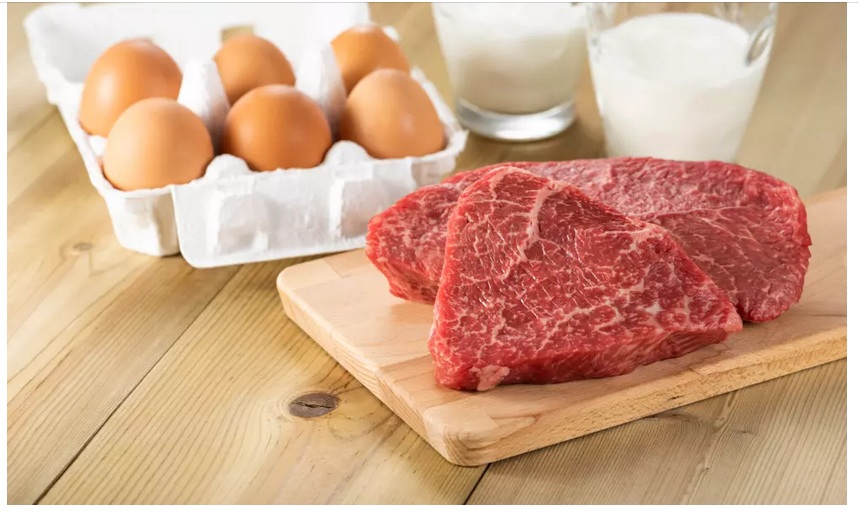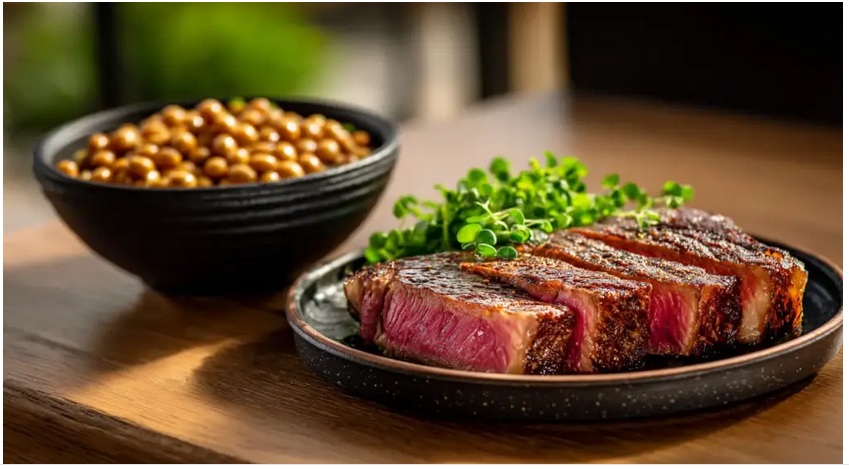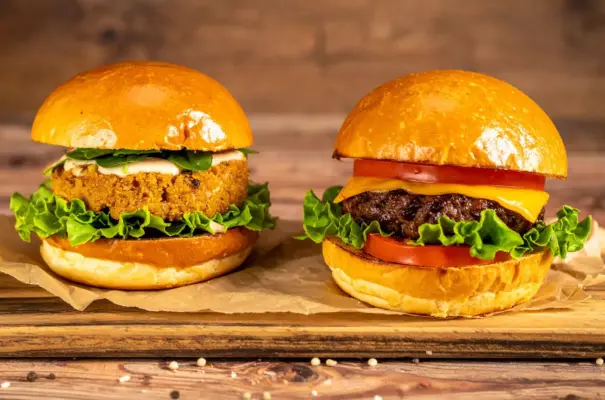In recent years, we’ve observed a rise in marketing surrounding plant-based diets, especially the idea that we can – and should – get all our protein from them. Whether for environmental, ethical, or health reasons, more and more people are replacing beef with beans, burgers with lentils, and eggs with soy-based substitutes. But is this truly a positive development?
As a registered dietitian who has spent nearly two decades studying food systems, nutrition, and sustainability – and as co-author of Sacred Cow, as well as a recently published article in Frontiers in Nutrition – I’ve come to a very clear conclusion: not all proteins are created equal. The idea that one can simply swap an animal protein for a plant protein is, at best, misleading – and potentially dangerous for populations most in need of high-quality nutrition.
Let’s examine the key differences between plant-based and animal-based proteins – and why this distinction is far more important than most might imagine.
1. Protein quality: it’s not just the grams, it’s what’s in them

Photo: Kai Keisuke/ Shutterstock
When we talk about proteins, we are actually talking about amino acids – the building blocks of life. There are 20 amino acids, 9 of which are essential, meaning our bodies cannot produce them naturally. Animal proteins – such as beef, eggs, and dairy – contain all 9 essential amino acids in the correct proportions for human health. This is what makes them “complete proteins.”
Most plant proteins, on the other hand, are incomplete – lacking one or more essential amino acids or present in non-ideal proportions. For example, grains are low in lysine, while legumes are low in methionine. Theoretically, it’s possible to combine various plant proteins to achieve a complete amino acid profile (e.g., rice and beans), but this requires careful planning and often much larger quantities of food.
In the book Sacred Cow, Robb Wolf and I explore how this difference in protein quality affects real-world nutrition. For instance, one would need to eat three cups of cooked quinoa to get the same amount of protein found in a small serving of steak. This isn’t just a caloric load, but also a fiber and carbohydrate load that can be challenging for many people – especially those with blood sugar regulation issues.
2. Digestibility: how much of that protein are you actually using?

Photo: Pixel-Shot/ Shutterstock
It’s not enough to know the amount of protein shown on the nutrition label. What’s most important is the amount of protein your body can actually absorb and utilize. That’s where a metric called DIAAS (Digestible Indispensable Amino Acid Score) comes into play. DIAAS measures not only a food’s amino acid profile but also its bioavailability after digestion.
According to our recent article published in Frontiers in Nutrition, animal-based foods such as meat, milk, and eggs consistently score above 100 on the DIAAS scale, meaning they are excellent sources of digestible and bioavailable protein. Most plant proteins score significantly lower on this scale, sometimes below 75. This means you would need to consume much more plant protein to get the same usable protein as a smaller serving of animal protein.

Photo: Pressmaster/ Shutterstock
Animal-based foods are not only superior in terms of protein quality – they also possess a wide variety of essential micronutrients in forms that are more easily absorbed by the human body.
For example, red meat provides:
- Heme iron, which is 2 to 3 times more bioavailable than non-heme iron found in plants
- Vitamin B12, which is not naturally found in plant-based foods
- Zinc, choline, selenium, and fat-soluble vitamins, such as A, D, and K2
Plant sources often contain “antinutrients,” such as phytates and oxalates, which can inhibit the absorption of important minerals, such as iron, calcium, and zinc.
4. Satiety and weight management: protein that keeps you satiated

Poto: Olga Nayashkova/ Shutterstock
Another often-overlooked benefit of high-quality animal protein is its role in satiety. Protein is the most satiating macronutrient per calorie, and animal protein, in particular, has been shown to reduce hunger, regulate appetite, and help maintain lean muscle mass – all of which are essential for metabolic health and sustainable weight loss.
In the book Sacred Cow, we discuss the “Protein Leverage Hypothesis,” which proposes that humans will continue to eat until their protein needs are met – regardless of the number of calories consumed.
5. Public health consequences: who suffers when we have incorrect information?

Photo: fizkes/ Shutterstock
When we prioritize ideology over nutrient density, the most vulnerable populations are those who suffer most: low-income communities, growing children, women of reproductive age, and the elderly.
The rise of meat-free initiatives often overlooks global nutritional inequalities. In many parts of the world, animal-source foods are among the few reliable sources of bioavailable iron and vitamin B12.
The conclusion

Image generated by Artificial Intelligence
Protein is not just protein. A lentil is not a steak. A soy burger is not the same as grass-fed beef. And when it comes to meeting human nutritional needs – especially for the most vulnerable – animal protein is superior and essential.
Eat real food. Prioritize protein. And don’t be afraid to put meat back on your plate.
References:
Kavanaugh M, Rodgers D, Rodriguez N and Leroy F (2025) Considering the nutritional benefits and health implications of red meat in the era of meatless initiatives. Front. Nutr. 12:1525011. doi: 10.3389/fnut.2025.1525011
Rodgers D, Wolf R. Sacred Cow: The Case for (Better) Meat. BenBella Books; 2020.





